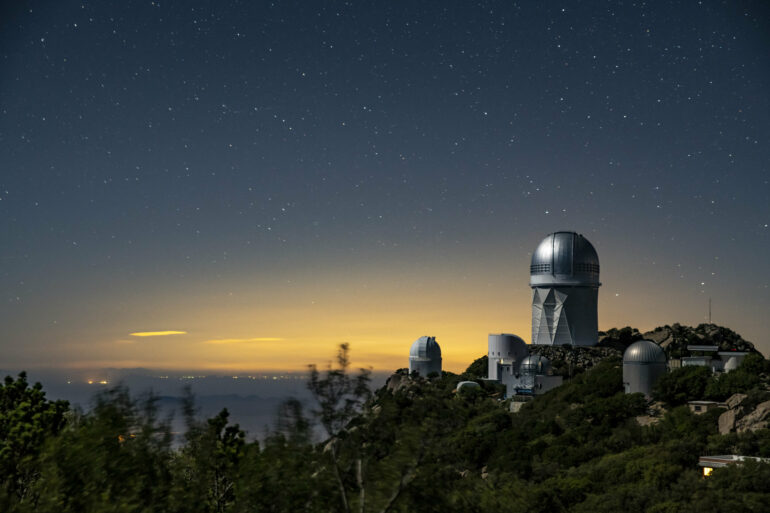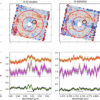Lado Samushia, associate professor of physics in the College of Arts and Sciences, Kansas State University, is part of a collaboration studying the mysterious force behind the universe’s accelerating expansion, referred to as dark energy.
The researchers are using the Dark Energy Spectroscopic Instrument, or DESI, located at the Kitt Peak National Observatory in Tucson, Arizona, to map more than 40 million galaxies, quasars and stars. The experiment is managed by the U.S. Department of Energy’s Lawrence Berkeley National Laboratory.
The collaboration recently released its first batch of data—with nearly two million objects for researchers to explore—and published a set of papers related to the early data release. The papers include early measurements of galaxy clustering, studies of rare objects, and descriptions of the instrument and survey operations.
Hanyu Zhang, a Kansas State University doctoral student in physics supervised by Samushia, is a lead author of the paper, “The DESI One-Percent Survey: Exploring the Halo Occupation Distribution of Luminous Red Galaxies and Quasi-Stellar Objects with AbacusSummit,” which is available on the pre-print server arXiv.
“Our team analyzed properties of two types of galaxies—luminous red galaxies and the galaxies that have quasi-stellar objects in their center—and saw very clearly that the luminous red galaxies gain mass and acquire fewer satellite galaxies with time,” said Zhang. “These insights provide valuable illumination on the physics involved in the evolution of massive galaxies.”
DESI uses 5,000 robotic positioners to move optical fibers that capture light from objects millions or billions of light-years away. It is the world’s most powerful multi-object survey spectrograph and can measure light from more than 100,000 galaxies in one night. That light tells researchers how far away an object is, allowing them to build a 3D cosmic map.
As the universe expands, it stretches light’s wavelength, making it redder. This wavelength stretch is known as redshift. The farther away the galaxy, the bigger the redshift is. DESI specializes in collecting redshifts that can be used to solve some of astrophysics’ biggest puzzles: what is dark energy, and how has it changed throughout the universe’s history?
More information:
Sihan Yuan et al, The DESI One-Percent Survey: Exploring the Halo Occupation Distribution of Luminous Red Galaxies and Quasi-Stellar Objects with AbacusSummit, arXiv (2023). DOI: 10.48550/arxiv.2306.06314
Provided by
Kansas State University
Citation:
Study finds luminous red galaxies gain mass and acquire fewer satellite galaxies with time (2023, July 7)



